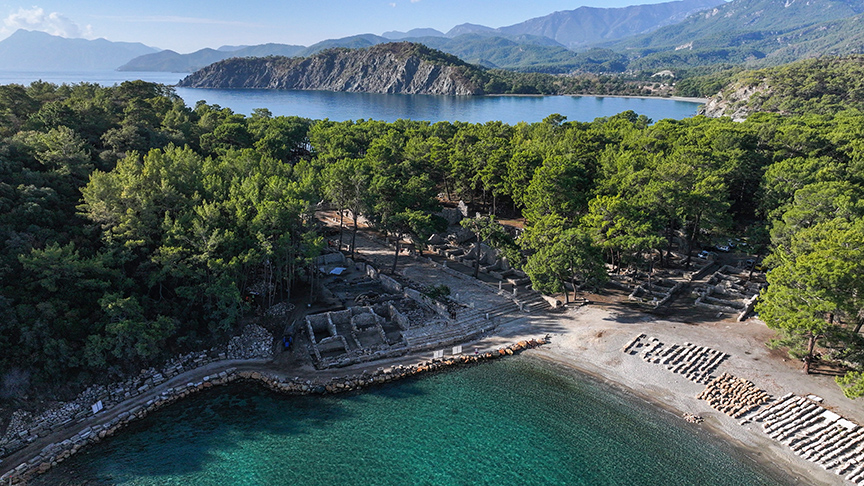
An altar dedicated to Apollo and Egyptian-origin votive figurines have been discovered in Phaselis
In the ancient city of Phaselis, located on Türkiye’s Mediterranean coast, an altar structure believed to be dedicated to Apollo has been discovered, along with small votive figurines featuring human and various animal figures.
In the ancient city of Phaselis, the last city of Lycia on the borders of Pamphylia in the Kemer district of Antalya, it is surprising that the discovered figurines have origins from Cyprus and Egypt.
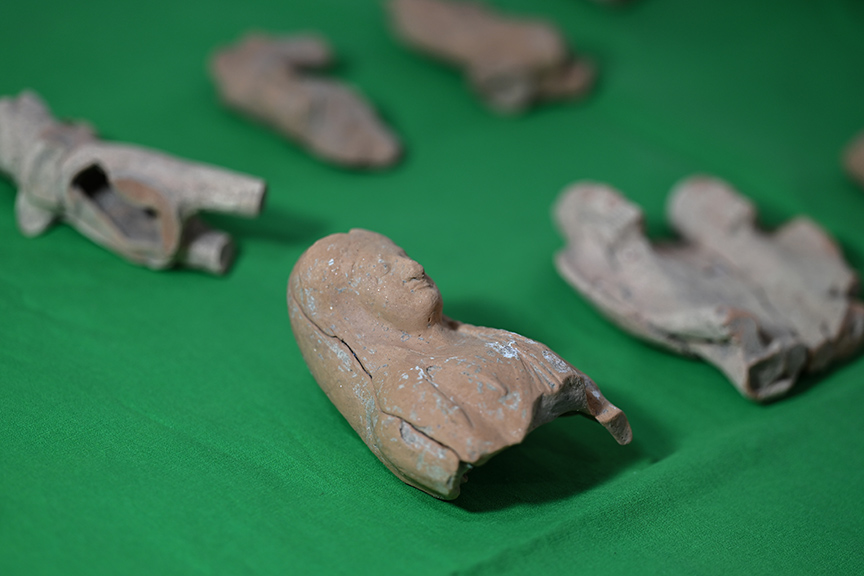
The history of the ancient city dates back to the 690s BC. It is considered one of the rare cities with three ports that contains remnants from the Persian, Alexander, and Roman periods.
The excavation work in Phaselis is ongoing continuously for 12 months under the leadership of Prof. Dr. Erdoğan Aslan.
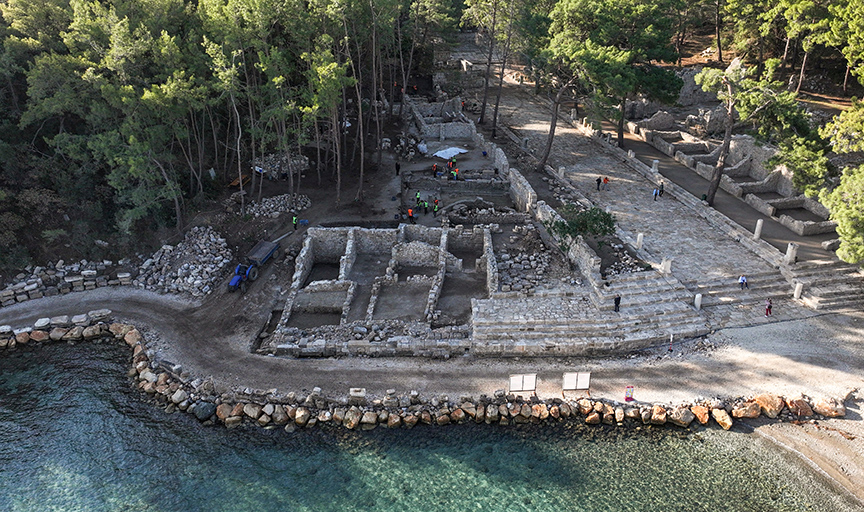
The altar and votive figurines are estimated to be 2,600 years old
Erdoğan Aslan stated, “In the excavations we are conducting at the ancient city of Phaselis, we discovered an altar structure, which we date to the Archaic period, meaning a sacred area, along with small votive statuettes. These reflect a date around 620 BC. This is a very significant finding and a group of artifacts. The artifacts we found are of a quality that could be encountered once in a century or two. They are immensely valuable in terms of illuminating the early history of the city.”
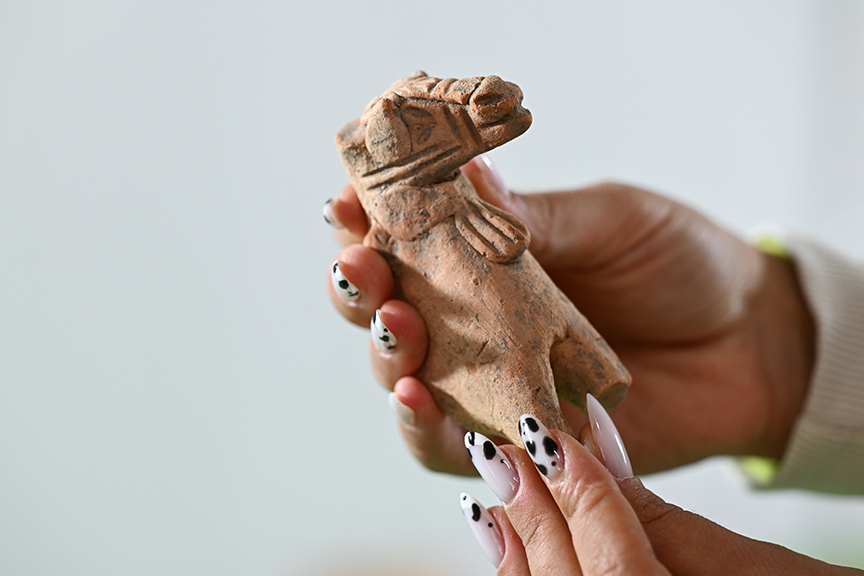
According to archaeologists, the fact that all the discovered figurines are broken indicates that they were intentionally broken and offered as sacrifices to the gods.
The altar’s proximity to the ancient harbor adds a significant importance. It is likely that this harbor was used when the city was first established.
Aslan stated, “The passengers and owners of the ships coming and going to the harbor probably made offerings here before setting sail, in hopes of safely reaching their homeland.”
It has been determined that the figures made of stone or ceramic have origins from Cyprus and Egypt.
Aslan, the votive statuettes found within the altar are made of stone or ceramic and provided the following information about the figures:
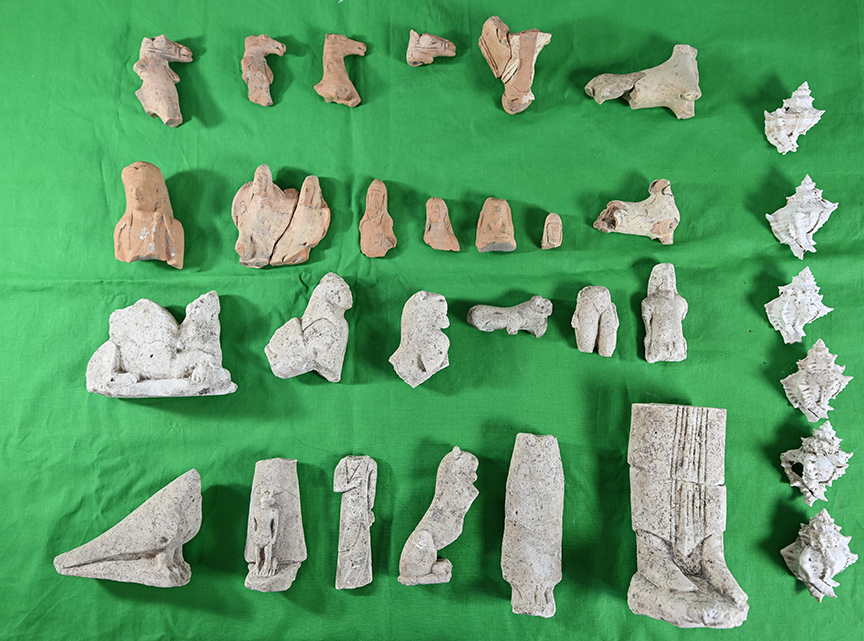
“The group of artifacts includes figures such as humans, lions, horses, mounted cavalry, and warriors. Both the ancient city and our entire coastal line, as well as the findings from the ancient periods in the Eastern Mediterranean, are sensational. For archaeologists, this is a very exciting discovery. Finding them as a complex along with the period, their rarity, and the structure they belong to is an exhilarating set of data.”
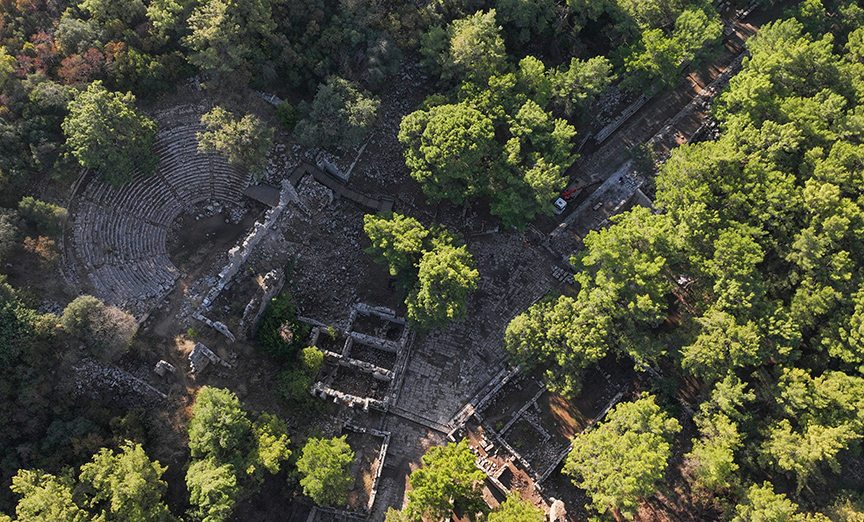
“The figures are of Cypriot and Egyptian origin. This reveals the relationships the city had with Cyprus and Egypt during its early period. Herodotus mentions that in the 650s BC, Hellenion was established in Naukratis, Egypt, which included Phaselis among several cities. Thus, we also find a connection between Naukratis and Cyprus. Clearly, they were visiting this sacred area, making their offerings and altars, as we understand from the inscriptions and archaeological findings that they were dedicated to Apollo.”
You may also like
- A 1700-year-old statue of Pan unearthed during the excavations at Polyeuktos in İstanbul
- The granary was found in the ancient city of Sebaste, founded by the first Roman emperor Augustus
- Donalar Kale Kapı Rock Tomb or Donalar Rock Tomb
- Theater emerges as works continue in ancient city of Perinthos
- Urartian King Argishti’s bronze shield revealed the name of an unknown country
- The religious center of Lycia, the ancient city of Letoon
- Who were the Luwians?
- A new study brings a fresh perspective on the Anatolian origin of the Indo-European languages
- Perhaps the oldest thermal treatment center in the world, which has been in continuous use for 2000 years -Basilica Therma Roman Bath or King’s Daughter-
- The largest synagogue of the ancient world, located in the ancient city of Sardis, is being restored











Leave a Reply